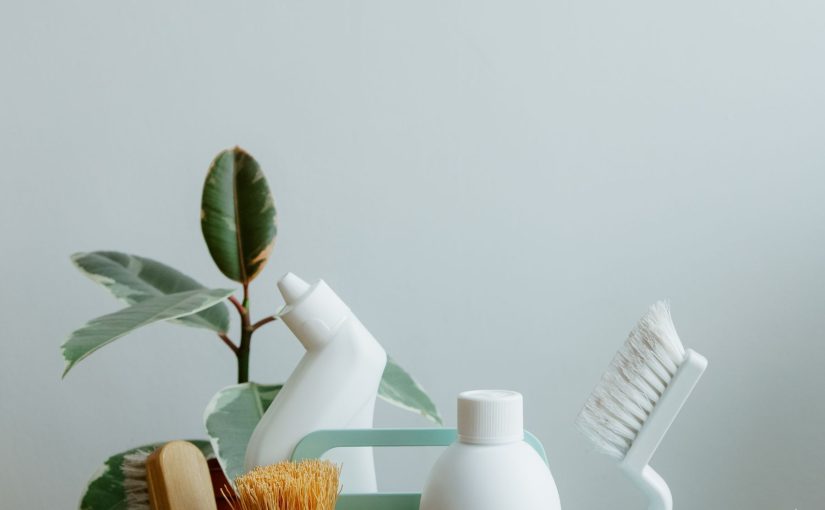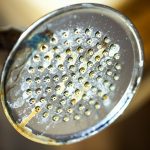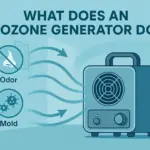Table of Contents
How to Thoroughly Clean the Water Tank of Your Humidifier
 Cleaning the water tank of your humidifier regularly is crucial to ensure proper functioning and prevent potential health hazards. Hard water minerals, mold, bacteria, and other contaminants can quickly build up inside the tank if not removed through frequent cleaning. Follow this comprehensive guide to learn the best practices for deep cleaning your humidifier’s water tank.
Cleaning the water tank of your humidifier regularly is crucial to ensure proper functioning and prevent potential health hazards. Hard water minerals, mold, bacteria, and other contaminants can quickly build up inside the tank if not removed through frequent cleaning. Follow this comprehensive guide to learn the best practices for deep cleaning your humidifier’s water tank.
Why It’s Important to Clean the Water Tank
Allowing sediment, film, and grime to accumulate in the water tank can lead to a number of problems:
- Decreased mist output
- Strange odors emitting from the humidifier
- Excess white dust circulating into the air
- Potential mold and bacteria growth
- Mineral buildup that can damage the humidifier
Many health issues have been linked to dirty humidifiers, including lung inflammation, asthma attacks, and sinus congestion. Hard water minerals, mold, and bacteria can all become airborne when released through the mist.
Don’t miss our in-depth Humidifier Guide.
Regular cleaning helps preserve the life of your humidifier too. Scale buildup from hard water is abrasive and can eventually lead to leaks or mechanical problems. Proper maintenance will help your humidifier run more efficiently for many years.
How Often to Clean the Water Tank
Humidifier manufacturers generally recommend deep cleaning the water tank every 1-2 weeks. However, you may need to clean it more frequently if:
- You have hard water
- Notice scale building up quickly
- See cloudy white dust in the tank or room
- Detect strange odors
Here are some general guidelines for how often to clean your humidifier’s water tank based on use:
| Humidifier Use | Cleaning Frequency |
|---|---|
| Occasional, 1-3 times per week | Every 2-3 weeks |
| Daily, 4-7 times per week | Weekly |
| Constant, 8+ hours per day | Every 5-7 days |
Check the tank daily to assess if a more thorough cleaning is needed sooner. Catching buildup early prevents bigger problems.
What You’ll Need to Clean the Tank
Cleaning the humidifier tank is simple with just a few household items:
- Distilled white vinegar – Breaks down mineral deposits
- Baking soda – Helps scrub away grime
- Small brush or cotton swabs – Reaches corners and crevices
- Soft cloth – Wipes down surfaces
- Distilled water – Prevents new mineral deposits
Avoid abrasive chemicals or scrubbers that could scratch the tank. Stick to gentle, natural cleaning solutions.
How to Clean a Humidifier Water Tank Step-by-Step
Follow these steps for a deep, thorough cleaning of your humidifier’s water tank:
- Unplug and disassemble the humidifier. Remove the tank, any filters, and humidifier parts that come in contact with water.
- Empty the tank and rinse under warm tap water if heavily soiled. This will remove any loose debris.
- Fill halfway with undiluted white vinegar. Let soak for at least 30 minutes up to a few hours.
- Swish the vinegar around to cover all surfaces. This will break up mineral deposits.
- Scrub away stubborn buildup with a small brush or cotton swab and baking soda.
- Rinse thoroughly with warm distilled water 2-3 times to remove all vinegar.
- Disinfect (optional) using a dilute bleach or peroxide solution. Rinse again.
- Air dry fully before reassembling so no moisture is trapped.
It’s crucial to hand dry all surfaces and crevices with a soft cloth before reassembling your humidifier. Even minor dampness left behind can promote bacterial growth.
How to Clean Specific Humidifier Tank Types
Certain humidifiers may require special care when cleaning the water tanks. Here are tips for some common humidifier models:
Ultrasonic Humidifier Tanks
- Avoid submerging the transducer or any electrical parts in liquid
- Carefully scrub the transducer surface with a soft-bristle brush
- Remove any standing water inside the tank after cleaning
Warm Mist Humidifier Tanks
- Remove heating element or chamber before cleaning
- Do not submerge any electrical components
- Clean hard-to-reach areas with cotton swabs
Evaporative Humidifier Tanks
- Remove and clean the wick cartridge separately
- Disinfect damp wicks before reinserting by soaking in vinegar solution
- Rinse out dust pre-filters until water runs clear
Refer to your specific humidifier manual for additional cleaning recommendations. Never submerge any electrical parts in water.
 Cleaning Water Tanks by Humidifier Type
Cleaning Water Tanks by Humidifier Type
Certain humidifier types tend to accumulate more mineral deposits and film than others. Here is how often each type generally needs cleaning:
| Humidifier Type | Cleaning Frequency |
|---|---|
| Warm mist humidifier | Every 2-3 weeks |
| Cool mist impeller humidifier | Weekly |
| Evaporative wick humidifier | Every 2 weeks |
| Ultrasonic or steam vaporizer | Every week |
Scale from tap water accumulates fastest in ultrasonic and evaporative models. Cool mist impeller types require frequent cleaning to remove mold and bacteria.
Tips for Cleaning a Humidifier Tank Naturally
Prefer to use natural cleaners when cleaning your humidifier tank? Here are some effective options:
- Distilled white vinegar – Breaks down mineral deposits
- Lemon juice – Removes most hard water stains
- Baking soda – Acts as a gentle abrasive
- Hydrogen peroxide – Disinfects without harsh chemicals
- Sea salt – Scrubs away grime
- Tea tree oil – Kills mold and mildew
Always spot test natural cleaners on a small area first to check for any damage to the tank surface. And be sure to rinse very thoroughly after cleaning.
How to Dry the Tank Completely
It’s crucial to fully dry the water tank after cleaning before putting it back into your humidifier. Leftover moisture promotes rapid growth of mold, fungi, and bacteria.
Here are some tips for drying the tank completely:
- Allow the tank to air dry upside down for at least 8 hours
- Hand dry crevices and corners with a soft cloth
- Use a pipe cleaner to dry any narrow openings
- Let the tank sit out for 1-2 days if your climate is very humid
- Insert a fan or dehumidifier nearby to speed up drying time
It can be difficult to fully dry indented areas and cracks inside the tank. Pay special attention to these areas when hand drying the surfaces.
Cleaning the Tank Exterior
Don’t forget to also wipe down the exterior surfaces of the humidifier base and tank regularly. This prevents any mold or bacteria from being transferred from your hands to the air.
Mix a 50/50 vinegar and water solution in a spray bottle. Spray tank exteriors and wipe with a soft cloth. This will disinfect and remove any mineral dust.
How often you clean the tank exterior depends on environmental factors in your home. More frequent cleaning is needed if you have pets, smoking occurs indoors, or the humidifier is in a bedroom.
Preventing Mineral Buildup Between Cleanings
Regular tank cleanings can be tedious. Here are some tips to slow down mineral scale accumulation inside your humidifier tank:
- Use distilled or filtered water instead of tap water
- Change the tank water daily
- Only fill the tank halfway
- Wipe down exterior tank surfaces frequently
- Install demineralization cartridges or filters
- Use cleaning balls or tablets in the tank
Also, be sure to follow the manufacturer’s maintenance schedule for replacing any filters, wicks, or other parts. This will help your humidifier function properly.
When to Call a Professional
DIY cleaning is sufficient for most humidifier water tanks. But call in a professional service if you notice:
- Visible mold growth inside the tank
- Thick mineral scale that won’t scrub off
- Corroded or damaged tank surfaces
- Leaking water
- Strong, foul odors
Replacing the tank or extensive repairs may be needed in these cases. A professional can also disinfect the humidifier if you have health concerns.
Stay Healthy with a Clean Humidifier Tank
Cleaning your humidifier tank regularly is one of the best ways to keep your unit working efficiently and outputting clean moisture into your air. Be sure to disinfect and dry the tank completely after each cleaning to prevent health hazards.
Refer to your owner’s manual for model-specific maintenance tips. And clean the tank whenever you notice any strange odors or decrease in performance. Taking good care of your humidifier will save you from expensive repairs and keep your environment healthy.


 Cleaning Water Tanks by Humidifier Type
Cleaning Water Tanks by Humidifier Type


